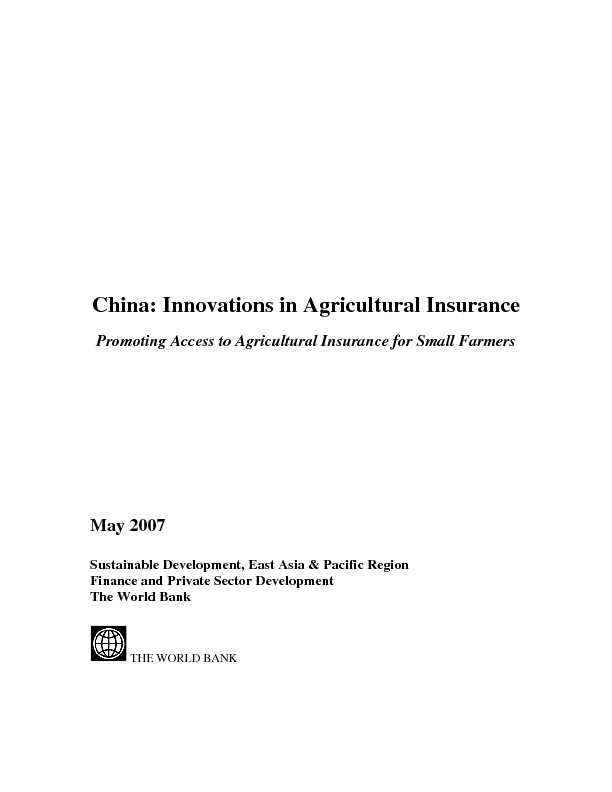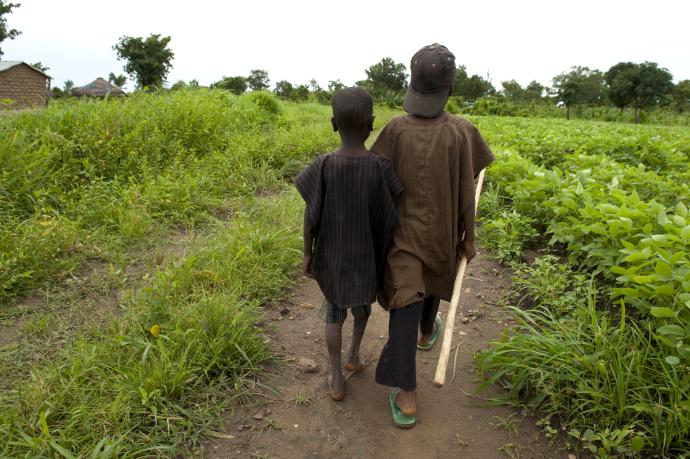Risk characterizes life for many of the world’s poorest households. They are more likely to be located in environments where livelihoods are highly susceptible to weather and price variability and where health risks are pervasive. When these risks are uninsured, they not only reduce the current welfare of poor rural households, but also threaten future income growth and thus perpetuate poverty. Reducing the risks faced by poor households, and enabling poor households to better deal with bad events when they do occur, is essential to improving their welfare in the short run and their opportunities for income growth in the long run. This note draws on the briefs published in the IFPRI’s 2020 Focus “Innovations in Insuring the Poor” and other work, to examine the potential for agricultural insurance, and in particular index insurance, as a risk management tool for rural households in sub-Saharan Africa.
General
You are here

Content owner:
The World Bank Group
Topics:
China is the world's most populous country and one of the largest producers and consumers of agricultural products. It produced crops and livestock valued at $366 billion in 2004, about 50 percent more than the U.S. total. Despite limited supplies of land, water, and other natural resources, China grows most of its own food and is a major exporter of many agricultural commodities. China ranks number 1 in the world in rice paddy production with over 40 percent more production than India which ranks number 2. Importantly, China also ranks number 1 in the world in fresh vegetable production with 4 times more production than India which ranks number 2 again. China is also the largest wheat producing country in the world. In total, China ranks number 1 in the world in the production of 45 agricultural commodities (FAO, 2005).

Pre-feasibility work is important, as initiating index insurance schemes is often very challenging. For example, the need for accurate and reliable data for the establishment of the index creates major challenges in many developing countries. For years there has been underinvestment in meteorological services and infrastructure and very often data series are simply not available. There are a number of prerequisites that are necessary for the implementation of pilot or scheme and practitioners should seek to identify whether these are available at the very outset of the activity. In certain cases, where some prerequisites are missing, there may be alternative solutions and technology can play an important role in this regard. For example, where traditional weather data is missing, “synthetic weather” has been constructed using a number of data sources to backfill missing gaps.

Content owner:
The authors are part of Harvard Business School; Centre for Micro Finance; and the World Bank and were supported by the Evid
Language:
English
Topics:
Full Publication available here Index-based micro-insurance overcomes many of the challenges faced by crop insurance programmes by delinking indemnification from individual production. Although subject to its own limitations, such as basis risk, index insurance may provide less-costly and more-transparent risk management than other alternative products, enabling farmers to make more-productive investments and better manage consumption risk.
